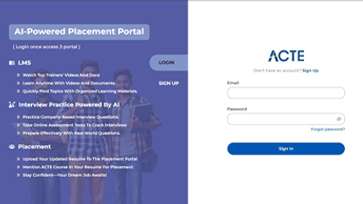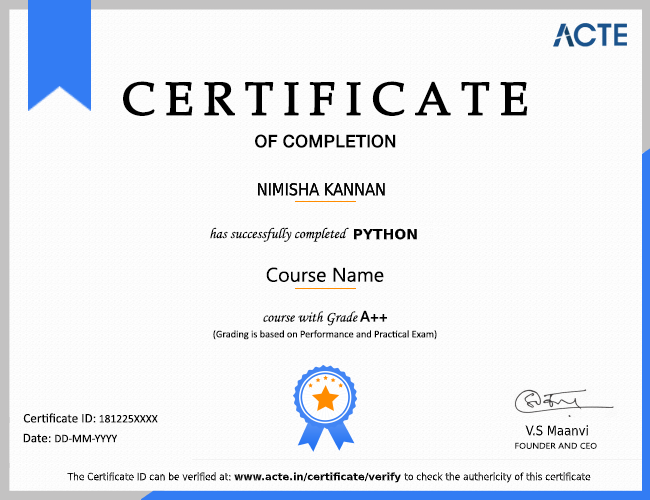Julia Online Training provides fundamental information on the Julia programming language with a heavy focus on numerical correctness. Julia programs are organized around multiple dispatches; they can also be constructed by writing functions and overloading them for various types of arguments. Our Julia Course provides quality training covering solid basic knowledge and practical approach on core themes. This exposure to existing applications and situations for the industry will help students increase their abilities and conduct best practices in real-time projects. All ideas in Julia, numerical precision, scientific computing, and statistics can be studied in the course. By defining and overloading functions for various arguments kinds, Julia programs are arranged around multiples dispatches, etc. Furthermore, extensive training helps you build knowledge in this broad field to easily do your daily activities. Our skilled trainers provide the professors with more practical experience.
Additional Info
About Julia Training :
Whether you want to study Julia programming through online training, live classes, books, texts, or video lessons, this source has everything you need at your fingertips. The Julia Online Course provides a wealth of resources. You can choose from the video lessons provided on JuliaBoxTutorials if you want a basic introduction to Julia for various subjects such as Data Science, Data Frames, or Solving differential equations. If you're interested in learning from published books such as Statistics with Julia, Think Julia, and First Semester in Numerical Analysis with Julia, you can use the platform's links. In a nutshell, you'll receive access to every resource or platform you need to learn Julia programming.
Julia is a fast-growing programming language that combines the power and flexibility of Python with the speed of C, making it a compelling alternative for data research and financial modeling. Joe Marini covers the Julia programming language's syntax, basic concepts, and features in this course. Joe begins by discussing the language's features and how they differ from those of other languages. After that, he discusses Julia's data types, integers, and strings, as well as language features like data type casting and control and data structures. You'll be able to install and run Julia and create code using the language's features by the end of the course.
If you're not sure where to start learning Julia, have a look at this collection of LinkedIn Learning courses. It is a list of many courses and tutorials to assist you in learning Julia's various topics. Julia for Data Scientists, Julia Variables and Data Types, and the Basics of Julia are the most popular courses on the list. The best part is that all of these courses are created by Lynda's experienced educators. Furthermore, each of these courses comes with a ten-day free trial period, allowing you to learn at your own pace. You will receive a certificate of completion after finishing each course.
Roles and Responsibilities :
- It's a programming language that's both free and open source.
- The decision to use a programming language is always a personal one.
- Julia is a one-of-a-kind programming language since it eliminates the requirement for a second programming language to build high-performance programs.
- This isn't to say that it happens on its own.
- The programmer is responsible for optimizing the code that creates a bottleneck, but this can be done in Julia itself.
- Julia is a high-performance programming language that was created by Julia.
- Julia employs multiple dispatches, allowing the programmer to select from a variety of programming patterns that are tailored to the application.
- Julia is a dynamically typed programming language that may be used interactively with ease.
- Julia features a simple and easy-to-learn high-level syntax.
- Julia is a typed programming language with user-defined data types that make code more readable and resilient.
- Julia comes with a large standard library and a number of third-party packages.
Tools For Julia :
- Data manipulation tools
- Aviva
- Black Rock
- Aviva and BlackRock are two of Julia's current corporate clients.
- They utilize this software to calculate risks and perform time-series analysis.
- Julia has risen to prominence as a key tool in the disciplines of data science, visualization, machine learning, and artificial intelligence.
- Julia is a worthy rival to Python, especially when it comes to arithmetic coding.
- Python, which has been a favorite tool for programmers for many years, is facing a threat that many current programming languages confront.
- Julia was created to address the limitations of Python's data manipulation capabilities.
Frameworks For Julia :
Genie takes care of all of your virtual environments, and now that documentation is out, it's continually being updated by the excellent developer Essenciary (Adrian Salceanu), making Julia more usable as a web framework every day.
1. PyCall :
PyCall.jl is one of Julia's most difficult problems right now, which may come as a surprise. This Julia Online Course is because it currently depends on too many packages, which in turn rely on Python. While I fully appreciate that, the Python ecosystem is significantly larger than Julia's, Julia loses all of the gains in speed and using PyCall can even be slower than using Python.
2. Train-Test-Split :
Train-Test-Splitting is a crucial tool that is necessary for any machine-learning project. To validate an algorithm, you'll need a train and a test set, with some people opting for a validation set as well. Concerning this thread, I believe that Test-Train-Splitting for data-frames has been disregarded to some extent in the Julia discussion. Take my word for it: MLDataUtils is the software that most people have used for Train-Test-Split.
3. Miletus :
Miletus is a strong financial contract definition and modeling language that also includes a Julia-based valuation mechanism. Peyton Jones and Eber's research publications sparked the notion.
Required Skills For Julia :
Integration Module :
Pumas.jl stands for Pharmaceutical Modeling and Simulation and is a Julia program for the pharmaceutical business. It's utilized to simulate and estimate preclinical and clinical pharmacological models in quantitative form. Pharmacokinetic and pharmacodynamic (PK/PD) models, physiologically based pharmacokinetic (PBPK) models and quantitative systems pharmacology (QsP) models are all examples of this. Pumas can also undertake non-compartmental analysis (NCA), bioequivalence, and invitro-invivo correlation (IVIVC) analysis, giving you a single toolkit to handle all of your clinical drug development analysis.
Pumas is the first platform to combine pharmacometrics models with convolutional neural networks and other machine learning techniques. Pumas is extremely scalable, having the capacity to operate on GPUs and in any hosted or private cloud computing environment when used in conjunction with Julia Computing's other products, JuliaTeam and Julian. Pumas.jl may be accessed at Pumas.ai for more information.
Certification For Julia :
- Gives you an advantage while searching for a job and provides a competitive advantage over your competitors.
- Ensure knowledge and skills are up to date and can be applied to the job Provide credibility to those who are looking for a career in an IT domain.
- Offer fast track to career advancement Demonstrate the level of competency Professional Credibility as well as demonstrates your dedication and motivation to professional development.
- You are likely to stand out from the crowd and considered to be successful in your positions.
- Represents a well-recognized and valued IT credential that increases marketability and competitive edge.
Benefits For Julia :
- You will gain a deeper understanding of programming and how to apply it to real-world development needs in industrial projects and applications.
- Knowledge of the web development framework has improved.
- You may quickly create dynamic web pages with this framework.
- You'll learn how to create desktop, bespoke web, and mobile applications, as well as how to design, develop, test, and support them.
- Create and improve activities and procedures for testing and maintenance.
- In a JULIA environment, design, implement and create critical applications.
- Increased opportunities to work for top software businesses such as Infosys, Wipro, Amazon, TCS, IBM, and others.
- Julia includes a lot of useful tools and resources for machine learning and data science.
- This language was created with numerical and scientific computation in mind.
- Julia's math-friendly syntax makes it a great fit for Matlab, Octave, Mathematica, and R users, among other programming languages and environments.
- Julia is anticipated to attract more data scientists in the future, thanks to its own native machine learning packages.
- Flux is an example of such a library, and it's made up of numerous model patterns that are suited for common use scenarios.
- It has a lot of interoperability support with other Julia packages.
- Flux is entirely written in Julia, which allows users to make changes.
Pay Scale For Julia :
A data scientist, the occupation in which Julia is most likely to be utilized, has 293K vacant positions, according to Glassdoor. According to PayScale, the average developer who has knowledge of Julia earns 817K.
































